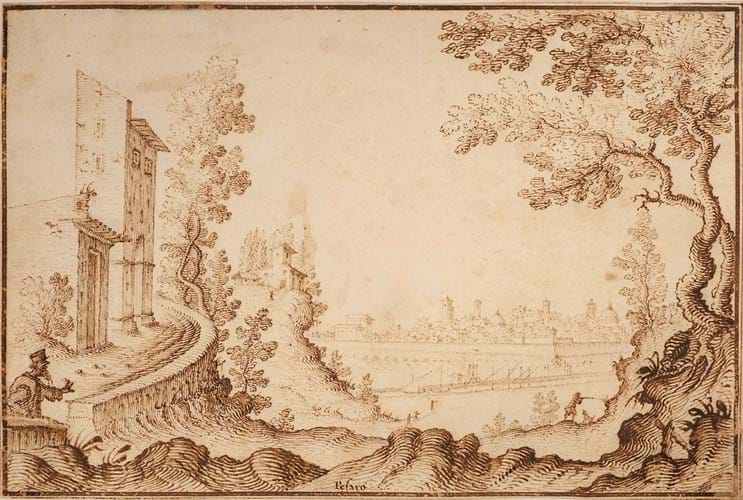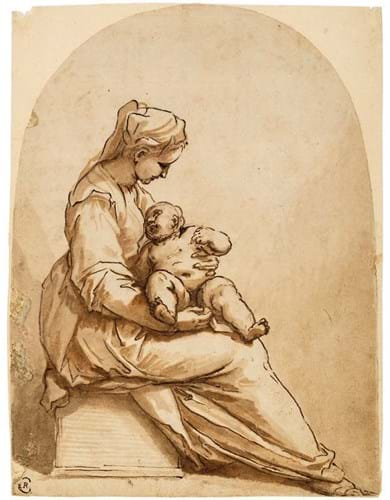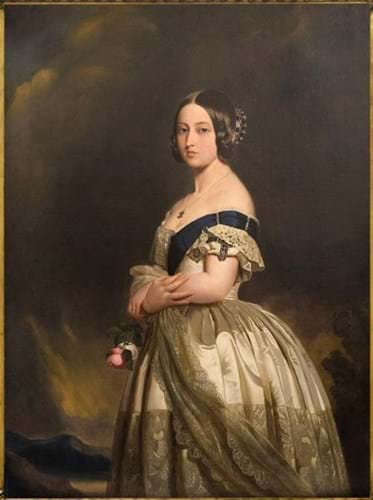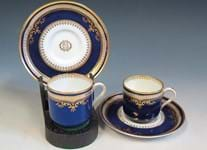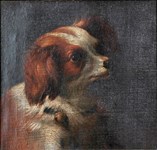“In the old days you barely got a whiff of provenance in a catalogue entry.”
Many UK auctioneers, such as Nathan Winter at Dominic Winter (20% buyer’s premium), have responded to the advent of private buyers and the internet by making their sales more accessible. This includes improving how consignments are researched and presented.
Cataloguing lots with the “maximum amount of information you can possibly supply,” as he put it, has helped the Cirencester saleroom to build on its reputation in the antiquarian book world and, more recently, carve out a niche in the Old Master drawings market.
“The spectrum of our buyers seems to be developing significantly, in terms of type and geographical spread, and I do think it’s a consequence of our approach to presentation,” said Winter.
Dominic Winter’s middle-market offerings of Continental and British Old Master drawings form part of the specialist picture sales it holds around three times a year. The emphasis placed on detailed cataloguing is noticeable in the lot descriptions.
“Drawings convey an artist’s thoughts,” says Winter. “You want to key into that and bring it alive by conveying any ownership details you may have and the physical facts about the drawing.”
These details add ‘personality’ to the object and also generate market confidence, thereby maximising its potential on the secondary market.
Research bears fruit
The latest sale on July 31 contained more than 60 lots from a variety of sources, some with new provenance entries – fruits of the research by Winter and his team.
Among them was a finished landscaped drawing of Pesaro by Remigio Cantagallina (1582-1656). The auction house believes it came from an album owned by the Duke of Wellington’s nephew, Henry Wellesley (1794–1866).
This album, titled Vedute di Toscana by Jacopo Ligozzi but largely made up of highly finished drawings by Cantagallina, was later dispersed in the 1950s by the London-based art dealer Hans Calmann (1899- 1982) who also owned this drawing. According to an inscription on the back, he gifted it to the vendor’s husband, Peter Ward-Jackson (1915- 2015), a curator at the V&A and a leading authority on prints and drawings.
Admired for the strong provenance and characteristic Cantagallina style – particularly the twisting trunks and tightly defined clusters of leaves – the 6 x 8½in (15 x 21cm) pen and brown ink drawing was taken to £2800 against a £1500-2000 estimate. The buyer was a dealership in Milan bidding online.
Art historian link
Elsewhere, a clutch of Old Master drawings came with provenance to the collection of the distinguished art historian Michael Jaffé CBE (1923-97), director of the Fitzwilliam Museum, Cambridge, from 1973-90.
Research into a collecting stamp found on two drawings further linked them to the famous miniature painter Richard Cosway (1740-1821), a major collector of Old Master pictures, sculpture and objets d’art.
A tender 10 x 8in (25 x 20cm) drawing of a woman and child in brown inks attributed to the prolific Baroque draughtsman Pier Francesco Mola (1612-66) was knocked down at £1900 to a private buyer in Amsterdam bidding on the internet who also bought several other Dutch and Italian drawings.
The other, a 5 x 10in (12 x 24cm) sepia pen and ink drawing of a male nude with putti, c.1600, offered with an early 17th century Italian School pen and ink of a writhing Saint Sebastian tied to a tree, was taken to £3200 (£200-300 estimate).
Bidding for the Jaffé consignment peaked with a group lot of four drawings catalogued simply as ‘Dutch school’.
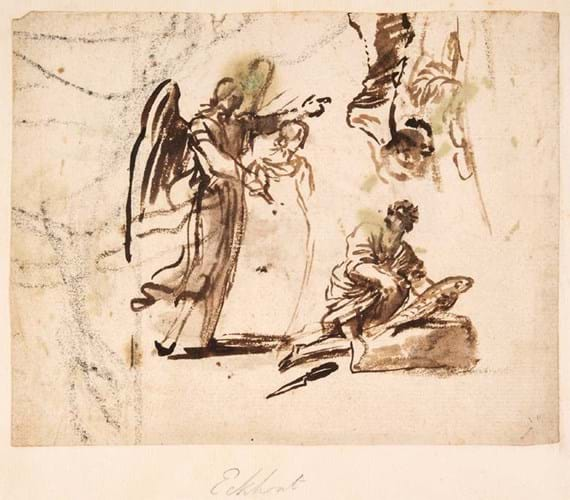
Tobias and the Angel, first half 17th century, catalogued as ‘Dutch School’ and inscribed with the name ‘Eckhout’ – £13,000 at Dominic Winter.
One of these was a small sepia pen and ink sketch of Tobias and the Angel believed to date from the first half 17th century. The sheet, which measured 6½ x 8¼in (16 x 21cm), had the name ‘Eckhout’ inscribed in pencil by a recent hand to the lower margin – presumably a reference to the Amsterdam artist and pupil of Rembrandt, Gerbrand van den Eeckhout (1621-74).
Estimated at £300-400, the lot drew considerable interest online and was knocked down to an Italian buyer in Malta for £13,000.
“Given the price, I assume that one or two specialists thought this drawing had some real verve to it. It was sketchy and scruffy and clearly shows the mind of an artist at work,” said Winter.
British Museum 'keeper'
A group lot of archive material relating to William Young Ottley (1771-1836), an amateur painter and Keeper of the Department of Prints and Drawings at the British Museum, generated keen interest to sell for £3400 (£700-1000 estimate).
Owned by the late medieval history scholar, Professor Cecil Clough (1930-2017), the lot included a 75-page Grand Tour sketchbook attributed to Ottley from c.1791-99 with annotations by the British archaeologist Thomas Ashby (1874-1931).
Noteworthy too was a group of mid-19th century watercolour views of Canterbury Cathedral and other sites in Kent and Sussex by the little-known artist Emily Prinsep (1798-1860). She was described as “an enthusiastic and skilful painter of English landscapes, scenes of domestic life, and portraits” but lived in the shadow of her better-known brother, the Pre- Raphaelite Val Prinsep.
Split between three lots estimated at £200-300 each, the group sold for a combined £5100 to a UK buyer.
Winterhalter copy
This contemporary copy of Franz Winterhalter’s famous portrait of Queen Victoria topped the £210,000 sale.
Placed on the catalogue cover, it was one of around 30 picture lots from the late Jack Webb (1923-2019), a D-Day veteran who became a Camden Passage antiques dealer and passionate collector of militaria and objets d’art.
His collection had already caused a stir at the Cirencester saleroom when a terracotta portrait bust of Jamaican-British Crimean nurse Mary Seacole, estimated at £700-1000, sold for a remarkable £101,000 the previous day (see News, ATG No 2454).
This version of the young queen holding a spray of roses and wearing the Order of the Garter was painted in Australia, c.1857-1861, around 20 years after Winterhalter’s original, which hangs in Versailles. The 4ft 7in x 3ft 5in (1.4 x 1.05m) oil on canvas was probably based on a copy made for Government House in Melbourne and was probably “commissioned for another official building or important personage”.
It had been relined sometime in the late 19th or early 20th century and featured an old label to the verso for Melbourne framer Richard Foster Norton.
Here, it was attributed to Russian artist Nicholas Chevalier (1828-1902) and the auction house said he was one of few artists working in Melbourne at the time “capable of producing a work of this quality”.
He is best known as a painter of highly valuable pioneer landscapes of Australia and New Zealand, such as Mount Abrupt and Grampians (1863) which sold in 2013 at auction in Melbourne for Aus$250,000 (around £150,000).
Conservatively estimated at £4000-6000, the portrait drew multiple bids from a full bank of phones and was knocked down to a West End dealership for £14,500.


